Moses; Priest, Prince or Master Mason?
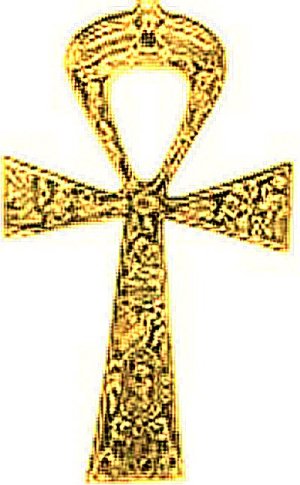 ..
..
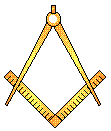
On this page we will trace and establish a continuous link of; 'God's Laws', 'Divine Wisdom' the Masonic style ceremony, other important and relevant similarities, time lines and history from Egypt through the New Kingdom, to the time of Solomon. We will cover the time lines that link ; Abraham and Joseph, Seqenenre Tao II and Moses, David and Amenhotep III, Solomon and Akhenaton together.The five books of Moses are a.k.a. The Pentateuch, the Books of the Law, the Torah. Ancient Jewish and Christian writers, such as Ecclesiasticus, Josephus, Philo, and Origen were essentially in full agreement that the Pentateuch was written solely by Moses. The Mishnah and the Talmud also confirm this. Tradition during the first millennium of Christian history agrees with this belief and these books began with Genesis. However Genesis was taken from a much older book called The Chaldean Account of Genesis. This creation epic is over 5000 years old and in it there are two gods. We discuss this at length on Forbidden Knowledge Forward
A contemporary of Philadelphus was Manetho, a High Priest at Heliopolis, and a learned man, also a prominent scribe of the Great White Brotherhood, who had access to the secret teachings of the Order.
Manetho was also master of the ancient Egyptian writing, or Hieroglyphics, which, in the Third Century B.C., was becoming archaic and could not be generally read. The Egyptians were at that time reading a modern version of the ancient writings, the Demotic, and Greek was becoming still more popular. Philadelphus commissioned Manetho to compile a history of Egypt, and particularly a text of the mystic philosophy of the Secret Schools of the Great White Brotherhood and Rosicrucians. This knowledge, we are told, was mainly contained in the Hieroglyphic inscriptions in the library of the priesthood at Ra. It will be recalled that Amenhotep IV (Akhnaton) declared Ra, the sun, to be a physical manifestation or symbol of the great sole God.
This library, therefore, must have contained the great truths of his monotheistic religion, and the truths which the thinkers with which he surrounded himself at Tell el-Amarna discovered. Much that we know of the outer or profane history of Egypt came about through this compilation by Manetho. In fact, it is generally conceded that Plutarch acquired much of his information from this source. In a book of Manetho's, called Sothis, of which fragments only are to be found in the writings of others, appears the following letter to Philadelphus, from Manetho, telling of his efforts to compile the ancient wisdom:
"We must make calculations concerning all the points which you may wish us to examine into, to answer your questions concerning what will happen to the world. According to your commands, the sacred books, written by our forefather, Thrice-greatest Hermes, which I study, shall be shown to you. My Lord and King, farewell."
Manetho's greatest work was his Egyptian history, which was done in three books, and in the Greek language. It is famous because it is the only work in Greek based upon a full knowledge of the Egyptian sources. Fragments of these works come to us today in the writings of Fiavius Josephus and Julius Africanus. The former is a more reliable authority and refers to Manetho in his treatise, Against Apion. In the History of Egypt by Manetho, there is an interesting reference to Moses, which shows him also to have been an initiate of the Great White Brotherhood of Egypt, and to have transmitted their knowledge in a veiled manner to his people. The excerpt reads:
"Moses, a son of the tribe of Levi, educated in Egypt and initiated at Heliopolis, became a High Priest of the Brotherhood under the reign of the Pharaoh (Amenhotep ?). He was elected by the Hebrews as their chief and he adapted to the ideas of his people the science and philosophy which he had obtained in the Egyptian mysteries; proofs of this are to be found in the symbols, in the Initiations, and in his precepts and commandments. The wonders which Moses narrates as having taken place upon the Mountain of Sinai, are, in part, a veiled account of the Egyptian initiation which he transmitted to his people when he established a branch of the Egyptian Brotherhood in his country, from which descended the Essenes. The dogma of an 'only God' which he taught was the Egyptian Brotherhood interpretation and teaching of the Pharaoh who established the first monotheistic religion known to man. The traditions he established in this manner were known completely to only a few of them, and were preserved in the arcanae of the secret societies, the Therapeutics of Egypt and the Essenians."
{i.e. the Therapeutae} I searched Josephus' Against Apion for the above quote, but could not find it. Lewis gives no page# or reference, as usual. Try searching for "Heliopolis" at http://www.earlyjewishwritings.com/text/josephus/apion1.html and http://www.earlyjewishwritings.com/text/josephus/apion2.html}
“This may come as a surprise to many of you, and in opposition to what Manetho
says above, Moses was named after a pharaoh family of the 17th Dynasty. For a reference
of this sort of thing, I will refer to a book Civilization Before Greece & Rome by H. W. E. Saggs,
page 105:
“At some periods, when scribes signed documents, they added the names
and professions of their fathers after their own names, and from this we learn
something about the class to which they belonged. At the end of the third millennium
they were mainly sons (or, rarely, daughters) of well-to-do people, such as city governors,
temple administrators, army officers, tax officials or priests. We also find
references to poor orphan boys being adopted by generous patrons, who, at the
height of their kindness, put them to learn the scribal art.”
Let us look at the Egyptian name Moses and what it may mean and how it may shed some light on this religious drama. The first extra-Biblical record of Moses starts in Egypt with one historians view point.....
In the third century B.C. an important and influential Egyptian priest named Manetho wrote an account of his country’s history. It contained a wealth of information about ancient Egypt and included a chronological record of all Egyptian kings from the [supposed] beginning of the first dynasty (c. 3100 B.C.) down to the conquest of Egypt by Alexander the Great in 332 B.C.'
The account of the Priest Manetho [Ma-net-ho] who is said to have lived in the time of the Hellenized Ptolomies who ruled Egypt from 323-330BC. Manetho was commissioned to write the History of Egypt in the original version of Aegyptiaca. We can assume that Manetho went to the libraries of Egypt and researched his information for that work, here is an excerpt with comments on Manetho's book and the Manethoan literature that followed;
'Soon after the original composition, the Aegyptiaca was epitomized, by extracting a framework of kings to which clung the occasional historical statement. At the same time, however, the original work was being abused, commented and falsified for political and religious motives. It is not unlikely that at this time, new works about the history of Egypt were being written under Manetho's name. Such [possibly fake] works were often full of tendentious commentaries and anachronisms.'
'The classical authors who copied, commented or made references to the Aegyptiaca were thus confronted with different sources, all claiming to have been based on the original work. Josephus knew both the original Aegyptiaca or its epitome, and the fake Manethoan literature, but he was often unable to distinguish between them.
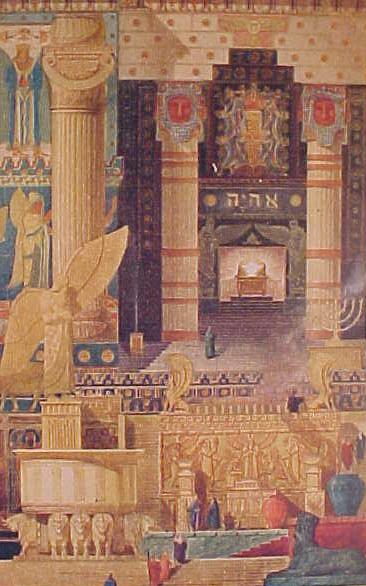 Another writer says; 'The writings of the ancient
Egyptian historian Manetho are seen as a some what reliable account. Manetho (c.280 BC) tells
us that Moses was by birth of Heliopolis, and his name was originally Osarsiph, from Osyris [Osiris],
who was the god of Heliopolis; but that when he was gone over to these people,
his name was changed, and he was called Moses. He was a priest of Heliopolis.
see Moses Osiris is
clearly an Egyptian God of that era.
Another writer says; 'The writings of the ancient
Egyptian historian Manetho are seen as a some what reliable account. Manetho (c.280 BC) tells
us that Moses was by birth of Heliopolis, and his name was originally Osarsiph, from Osyris [Osiris],
who was the god of Heliopolis; but that when he was gone over to these people,
his name was changed, and he was called Moses. He was a priest of Heliopolis.
see Moses Osiris is
clearly an Egyptian God of that era.
So now we have 3 different view points. So which one is correct?
The Kings did live at Heliopolis. We think that shortly after Moses was born the Egyptian Royal families moved back to Thebes because most accounts say that Moses grew up in Thebes. Seqenenre was killed while living at Thebes and Ahmose began his campaign to rid the country of 'the invaders' at Thebes. So Moses could not have been a prince under Amenhotep I, 1526–1506 BC., because Josephus recorded that his step-mother Tuthmoses brought him before the king that he might lead a army to repel the Ethiopians. More proof based largely on the Santarini volcanic eruption that occured in 1550 BC., which coinsided with the Exodus and was recorded in The Ipuwas papyrus. The papyrus contains proof of the Exodus. Some have interpreted the document as an Egyptian account of the Plagues of Egypt and the Exodus in the Old Testament of the Bible, and it is often cited as proof for the Biblical account by various religious organisations. The dating of the original composition of the poem is disputed, but several scholars, have suggested a date between the late 12th dynasty and the Second Intermediate Period (ca. 1850 BCE - 1600 BCE).
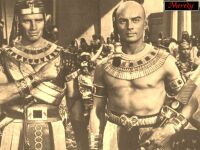 In our research, we know that Moses
was raised as an Egyptian. So we don't think Moses ever dressed like a
Hebrew nor did he create the Hebrew lifestyle as portrayed in
the KJB. The Hebrews who were a mixture of Asiatic and Semitic tribes who
woundered the desert. Beginning about 1750 B.C., they overtook
Egypt for four hundred years adopting the Egyptian lifestyle and mixing
it with their own shepherd background. The portrayl of Moses
in the movie 'The Ten Commandments, is probably closer to the truth than
most imagine. However Moses was more than the adopted son
of an Egyptian princess, he was a High Priest of the Egyptian
religion and a highly trained mathmetician, magician and alchemist.
In our research, we know that Moses
was raised as an Egyptian. So we don't think Moses ever dressed like a
Hebrew nor did he create the Hebrew lifestyle as portrayed in
the KJB. The Hebrews who were a mixture of Asiatic and Semitic tribes who
woundered the desert. Beginning about 1750 B.C., they overtook
Egypt for four hundred years adopting the Egyptian lifestyle and mixing
it with their own shepherd background. The portrayl of Moses
in the movie 'The Ten Commandments, is probably closer to the truth than
most imagine. However Moses was more than the adopted son
of an Egyptian princess, he was a High Priest of the Egyptian
religion and a highly trained mathmetician, magician and alchemist.
“The following are a list of pharaohs with this name:
Amosis, (Ahmose) Tuthmosis I,
Tuthmosis II, Tuthmosis III and Tuthmosis IV. It is now just a matter of finding out which
“mosis” is the pharaoh family which adopted Moses and gave him their name. Exodus
2:10 definitely states that the Pharaoh’s daughter named him:
“And the child grew, and she brought him unto Pharaoh’s daughter,
and he became her son. And she called his name Moses: and she said, because
I drew him out of the water."
“Ahmose,” “the moon is born,” chose the name because of a play on words? In Hebrew, “Ahmose” means the brother of Moses.
This brings up an interesting scenario. Moses was older than Ahmose. We know that Ahmose was only 16 years old when Seqenenre died. So is it possible that Seqenenre was the pharoah who ordered the Hebrew baby boys drowned? No, we don't think so. A pharoah named Apophis ruled the Northern city of Avaris/Memphis and he would have been the one who ordered the killing of the infant boys.
We theorized on the Widows Son page along with Christopher Knight and Robert Lomas that Moses was around when Seqenenre was killed. We also think it was Seqenenre that allowed Moses to attend the mystery schools of Egypt and learn everything an heir to the throne would be expected to learn. This confirms Moses was an adopted son of a princess in the house of the queen (Ahmose-Inhapi) and Seqenenre. see letter 31, bottom of the page.
Our Theories concerning the date of the Exodus and the involvement of Ahmose
in the expulsion of the Hyksos has been confirmed. From the History Channel,
Aug. 20th, and 26th 2006;
After six years of unprecedented research, host
Simcha Jacobovici
and a team of renowned archaeologists,
Egyptologists, geologists, and theologians shed revelatory new light on the Exodus
and the era's ruling Egyptian Dynasty. Their new theory pushes events hundreds of
years earlier than previously thought, allowing age-old stories to sparkle with
new perspectives and startling historical import. Using elaborate, state-of-the-art
CGI, THE EXODUS DECODED offers a stunning virtual account of stories like the birth
of Moses, the ten plagues, and the parting of the Red Sea, revealing once and for
all the difference between acts of Nature and the hand of God. Also included is a
bonus disc that examines two pivotal figures of the Exodus--Moses and Ramses the
Great--as well as the Ark of the Covenant. Ramses was not the pharoah of the
Exodus.
This documentary also exposes Joseph as a Hyksos pharoah living in Avaris, the Hyksos stronghold. Artifacts found at the site confirm that he lived there. With the conformation that the Exodus did indeed occur around 1550 B.C., the 10 plagues are attributed to the natural disasters caused by the massive eruption of the Santarini volcano. Many more details are exposed about the Hebrew people that are not very complimentary. They are called 'the evil ones'.
On our Widow's Son 2 page we discovered how Moses' father's name is only mentioned in Exodus 6:20 which seems very odd to us. His father is named as Amram, son of the Levite Kohath, son of Levi. Is this because he really is Egyptian? Laurence Gardner says Tiye could have been his mother- but this seems unlikely. Exodus names her as Jochebed. "They saved the male children alive" (Exodus 1:18). Shiphrah and Puah collected water and food from the houses of the rich women and gave it to the poor women, who thus sustained their children. Why some women in the Bible are un-named, or named after the fact, is an age-old conundrum. The rabbis of the Talmud and Midrash were quick to provide missing appellations: thus Potiphar’s wife of "no-name" becomes Zuleika; Lot’s salinized spouse is called Edit; and here, even more significantly, Moses’s mother is equated with the Biblical midwife, Shiphrah.see Biblical persons
An adopted child would take on the family name of the king. The Egyptian word mose means 'offspring' or 'heir' as in Tuthmose (born of Thoth) and Ahmose. We mentioned on our Intro page that Moses Meant 'brother of Ahmose'. Since we have confirmed that the capture and enslavement of the Hebrews did indeed occur in the 17th dynasty, under Ahmose.
But..."Manetho informs us that the Hyksos 'treated all the natives with a cruel hostility, massacring some and leading into slavery the wives and children of others'. Archaeology has revealed that the stratum F warriors were accompanied by their servants into the next world. The graves at Tell ed-Daba, containing sacrificial burials of young females, provide us with further indications of the brutality of the early Hyksos invaders."
"The invaders "settled at sites such as Avaris in the eastern delta and drove the
native Egyptian pharaohs back to their capital at Itj-Tawy in Upper Egypt."
- David M. Rohl, A Test of Time: The Bible from Myth to History (1995), p. 288, 289
"The Hyksos immediately proceeded to kill all the Egyptian males. Many Egyptians
fled to Crete and the Aegean mainland, where - with the indigenous population they
reconstituted a semblance of their culture. This accounts for the architectural similarity
along with the concept of the 'Living God' in the religion of the Classical Age. Further, the
Hyksos introduced the idea of 'slavery' into Egypt. Prior to their occupation, no Asiatics or
sub-Sahara Blacks were permitted into Egypt. The Hyksos, in fact, brought in Blacks as slaves..."
- Publius (publius@gate.net)
We also find that Joseph's relatives were Egyptian Kings. We cover the descendents from Ham, on Hiram Intro 2
Moses name was originally an Egyptian word meaning 'born of the Nile' or 'drawn from water'. His name may have been 'Moshe' in Hebrew. The KJ Bible relates that Moses was placed in the Nile by his mother after the 'Pharoah' ordered the killing of the new born boys of the Hebrew women. The Bible says, that the Egyptian Pharoah ordered this and it is implied that it happened many years after Joseph's death. However the scrolls and records of Egypt indicate Two Egyptian leaders in power at the same time; Namely the Hyksos and the True King Seqenenre Tao II.
We found this while researching Nimrod: A legend related of a rival king named Sargon who also served the God Enlil. In neo-Assyrian times it says that, "My mother was a changeling (?), my father I knew not. The brothers of my father loved the hills. My city is Azurpiranu (the wilderness herb fields), which is situated on the banks of the Euphrates. My changeling mother conceived me, in secret she bore me. She set me in a basket of rushes, with bitumen she sealed my lid. She cast me into the river which rose not over me. The river bore me up and carried me to Akki, the drawer of water. Akki, the drawer of water, took me as his son and reared me. Akki the drawer of water, appointed me as his gardener. While I was gardener Ishtar granted me her love, and for four and (fifty?) ... years I exercised kingship."
How closely this parallels the stories of Romulus, Bacchus, Osiris, and that of
Sargon who, preceding Moses by two thousand years, laid the foundations of civilization
for the first Semitic empire. Inscribed on fragments of Babylonian tile:
Sargona, the king of Akkad am I.
My mother was a princess, my father I did not know.
My mother, the princess, conceived me, in difficulty she brought me forth.
She placed me in an ark of rushes, with bitumen my exit she sealed up.
She launched me in the river, which did not drown me.
The river carried me, to Akki the water-carrier it brought me. . . .
As a rule the real family corresponds with the humble one, the noble family with the fictitious one. In the case of Moses something seemed to be different. And here the new point of view may perhaps bring some illumination. It is that the first family, the one from which the babe is exposed to danger, is in all comparable cases the fictitious one; the second family, however, by which the hero is adopted and in which he grows up, is his real one. The Jewish people in Egypt were certainly not without some kind of religion, and if Moses, who gave them a new religion, was an Egyptian, then the surmise cannot be rejected that this other new religion was the Egyptian one. see The Moses myth
Water is one of our oldest symbols. The water-wave glyph [illustration] is found in every land, representing the Great Deep, Chaos, Wisdom, and also Universal Mother: Mary, mother of Jesus, Maya, mother of Buddha, etc. see Moses and Those 'Horns'
And then there is the plagiarized story of Moses. Upon Moses' birth, it is said that he was placed in a reed basket and set adrift in a river in order to avoid infanticide. He was later rescued by a daughter of royalty and raised by her as a Prince. This baby in a basket story was lifted directly from the myth of Sargon of Akkad of around 2250 b.c. Sargon was born, placed in a reed basket in order to avoid infanticide, and set adrift in a river. He was in turn rescued and raised by Akki, a royal mid-wife.
Exodus 2 gives no name for Moses' mother or father and
as you can see, this is a 'copied' or borrowed account of Sargon. With that, what we
discovered does not agree with theological dogmatists who say Nimrod committed
a great sin by rebeling against God. That tale leaves out the real truth. He did rebel against a God but
the story has a different god in mind than the one the scriptures portray as YHWH. Josephus
recorded what really happened in his Antiquities of the Jews.
We have the real story on
Forbidden Knowledge forward 1
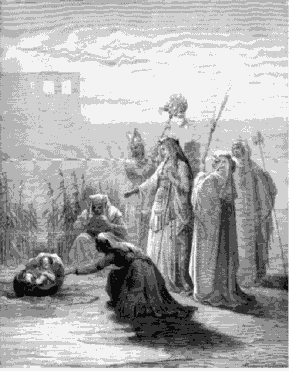 “Evidently, the meaning “I drew him out of the water”, for Moses’ name
is attributed only by modern commentators and became a secondary meaning for his
name. I made a search, and couldn’t find any Hebrew word combination that would
suggest such a meaning. It is obvious; the daughter of the Pharaoh didn’t go to
him and say, “Look at this Hebrew child I just saved from the river.”
“Evidently, the meaning “I drew him out of the water”, for Moses’ name
is attributed only by modern commentators and became a secondary meaning for his
name. I made a search, and couldn’t find any Hebrew word combination that would
suggest such a meaning. It is obvious; the daughter of the Pharaoh didn’t go to
him and say, “Look at this Hebrew child I just saved from the river.”
If that would have been the meaning of his name, at the time, the pharaoh would have taken Moses to the river and personally drowned him, for the pharaoh had made two different decrees. The first decree was an order to the midwives to kill any male Hebrew children (Exodus 1:16). The second decree by the pharaoh was to cast the male Hebrew children into the river (Exodus 1:22). Actually, the pharaoh’s order was being obeyed in the case of Moses, but the pharaoh didn’t stipulate not to place the Hebrew child in a waterproof basket.
Since it is widely accepted that Moses was adopted by an Royal Egyptian family of Egypt, some biblical scholars place the time this took place at between 1590 BC and 1580 BC. Others say it was 1574 BC which was the origional date ( Second Intermediate Period link ) of the end of Seqenenre's rule. A Triple Star Conjuction is recorded in 1600 BC that indicated a 'Holy Child's' birth. We prefer the 1590-1589 date but some scholars say the star was a sign of Moses' birth.
We have been told that Moses was a poor Hebrew boy saved from death by his mother and older sister, hidden in the rushes, then set adrift on the Nile and later pulled from the waters by the daughter of an unnamed Pharaoh and returned to his waiting mother and then being returned at an unknown age to the princess, then named Moses and reared in the great Pharonic household without question of his parentage.
Did he have a Hebrew name? How could his birth mother not name him? According to the Abrahamic law of circumcision and naming, both was to be done on the 8th day, even Zipporah knew that! So the tradition was known by Moses' people and those in the surrounding area for years.
“Moses" is an Egyptian rather than a Jewish (Hebrew) name; perhaps it is a shorter form of Ahmose. Professor Garstang, of the Marston Expedition of the University of Liverpool, claims to have discovered, in the royal tombs of Jericho, evidence that Moses was rescued (precisely in 1527(?) B.C.) by the then Princess, later the Queen Hatshepsut; that he was brought up by her as a court favorite, and fled from Egypt upon the accession of her enemy, Thutmose III. We disagree with this. Hatshepsut was not the rescurer because the writings of Josephus tell us a different story. As we previously stated; The adoptiver mother's name was Tuthmosis.
The Heliopolis stories claim Ezekiel instituted many new laws and customs quite opposite to those of Egypt and told his people they should not worship the Egyptian gods. 'But they abstained from killing those animals sacred to these gods and were to join themselves to nobody but those that were of this confederacy.' Information about King Solomon seems to dispute this change. His Temple was indeed decorated with an Egyptian motif including lion headed statues and various Egyptian symbols as Ezekiel's protest of this kind of worship is indicated in the scriptures. see Missing Lessons
“So far, we have established beyond all reasonable doubt, with the aid of archaeological evidence, that Moses and the Exodus must have taken place in the 17th Egyptian Dynasty. It has also been established that the city of On was originally a Shemitic city, and that Joseph did marry out of his kinship. We have also learned of a pharaoh by the name of Akhenaten and the new city he built to his god, Aten. Also, that Akhenaten was of a mixed Egyptian-Hurrian bloodline.
Furthermore, Moses is known as the Law Giver, the giver of the Ten Commandments, the Mosaic Law. However, the idea of a Law being passed from God to a prophet on a mountain is also a very old motif. Moses is just a law giver in a long line of law givers in mythological history. In India, Manou was the great law giver. In Crete, Minos ascended Mount Dicta, where Zeus gave him the sacred laws. While in Egypt there was Moses, who carried stone tablets and upon them the laws of god were written.
And as far as the Ten Commandments, they are taken outright from Spell 125 of the Egyptian Book of the Dead.
However no records of Moses' growing up seem be available
or remembered leaving that to establish the fact that the Hyksos
rulers did not know him except that one verse. Not to mention the order of the
Pharoah, 'to kill the first born son of every Hebrew' as he was determined to stop any uprising of a 'savior'.
Don't forget that Jacob and his father Abraham have been living
amoung the Hyksos and Joseph is the Pharoah's ( Hyksos ) visor.
The Hyksos had their capitol at Avaris, later called Memphis. If you consider it is Ahmose I, Seqenenre's wife who ran the Hyksos out initially, in 1549 BC., and the fact that Moses was rescued by 'A Royal Family of Egypt', it is reasonable to believe a princess of the Royal House of Thebes took Moses and raised him as her own son.
We think, that somewhere abound 1589 BCE Moses is born in Egypt and is adopted by princess Neferubity Thermuthis, as recorded by Josephus. This corresponds with the name Ahmose-Nefertari found on the list below as possibly being Tao's daughter and Ahmose's sister. We know that Egyptian Queens changed their names when they became Queen and particulary if there is no king left to rule. In this case Seqenenre was murdered. Since (Ahmose-Inhapi) was the mother of Amhose, Seqenenre's 2nd son and the only male left to rule, she changed her name to Ahmose so she could be a co-regent and rule until her son was 'of age'. The queen could have been Amenhotep I's wife at a later date..The child Moses later also became known as the Prophet of Allah.
On the Widows Son page, we identified a queen we called Ahmose I as Seqenenre's wife. She ruled after his death and then we identified her son as Ahmose II to show there was overlapping and co-regent rule by the two. The Ahmose II we use here is the 'son' of the queen (Ahmose-Inhapi) and Seqenenre. Ahhotep II was the daughter of Ahmose I and Ahmose-Nefertari and was the mother of the 18th Dynasty king Amenhotep. So does that make it possible that Moses was Akhenaten? At any rate these early 17th and 18th Dynasty queens had no qualms at all about taking command and leading armies if needed.
Ahmose I married his sister, Ahmose-Nefertiri, who became Egypt's first great God's Wife of Amun, and had a number of children including: Amenhotep I .
That is what indeed gave the Theban Kingdom the success in the rebellion against the Hyksos. Both Tao II plus Seqenenre's wife, Queen Ahmose-Inhapi, were discovered in 1881 by Emil Brugsch in the royal cache at Deir el Bahri. This is discussed in detail on The Widow's Son, page 2
Another name of the Queen
Tetisheri was a queen during the 17th Dynasty of Thebes, and was the commoner wife of Ta'o I (date unknown). She has been called the "mother of the New Kingdom" because of her influence over its founders, her son (To'a II) and grandsons (Kamose and Ahmose). As for Queen Ahhotep whose burial was found intact, all the military hardware agrees with Ahmose I's thanksgiving inscription made for his mother, in which he credits her with having taken charge of the kingdom after her husband's untimely death (Seqenenre Ta'aa I ), and also having taken charge of the army, and taken part in the suppression of several rebellions. Ahhotep II - 18th Dynasty. and see.. Tetisheri
The events here that follow make absolute, the place where Moses grew up and who's Royal House house he lived in. If you have been to 'The Shepherd Kings' page, understand the role of the Caretakers, the chain of events leads no where else but here.
Queen Tetisheri's daughter or another princess of the royal house could be the one who snatched Moses from the Nile. The King at the time Moses was born may have been Bebiankh 1600-1588 BC. An update on the chronology page puts the date Seqenenre II was in rule about 1558 BC - 1554 BC. This dating also makes Moses 40 years old when he mounts an attack on Ethopia. The KJB also puts his age at 40. This evidence also places the time precisely to when Moses would have been old enough to be involved in leading the Army during the expulsion of the Hyksos Kings in 1554 - 1549 BC.. He would have been about 36 years old when Seqenenre Tao II was killed.
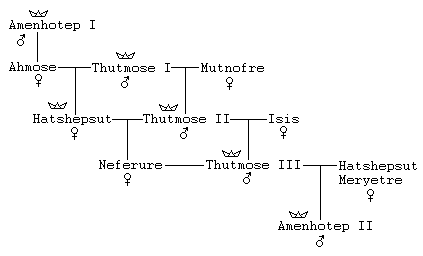 Kamose, Seqenenre's son, took over
power in 1554 - 1549 BC, just after Seqenenre was killed. Kamose used
Medjay-troops in his army as indicated by the Kamose Stelae.
We find confirmation on the XVIII dynasty page that 'Ahmose' was also the name of a
Queen who ruled with Amenhotep I. She probably was Tao's
daughter as we see her mother's name was Ahmose-Inhapi.
Then we see the name Ahmose-Nefertari. This indicates the greatness of Ahmose.
We have conformation below that this Ahmose married Amenhotep I as the chart here
indicates? Refer to the male/female signs.
Kamose, Seqenenre's son, took over
power in 1554 - 1549 BC, just after Seqenenre was killed. Kamose used
Medjay-troops in his army as indicated by the Kamose Stelae.
We find confirmation on the XVIII dynasty page that 'Ahmose' was also the name of a
Queen who ruled with Amenhotep I. She probably was Tao's
daughter as we see her mother's name was Ahmose-Inhapi.
Then we see the name Ahmose-Nefertari. This indicates the greatness of Ahmose.
We have conformation below that this Ahmose married Amenhotep I as the chart here
indicates? Refer to the male/female signs.Kings and Ruling Queens often changed their name to indicate power and rulership.
You will also notice, there is not anywhere any mention of Moses leading a battle in the King James Bible, but scholars say he did. Hyksos history and the Hebrew story would not have included this as Moses was involved in the war removing the Hyksos and they may not have been aware of him. The bible states that at the time Moses didn't know he was Hebrew. The Hyksos may have already been expelled or at least reduced in power under Kamose. In any case, they did not know who he was. One story indicates the Hyksos were finally driven out in 1549 BC after a decisive battle at Tanis under Ahmose I. It continues that the Theban kings keep raiding the Hyksos cities of the Middle East for many years.
We are not sure which battle cost Kamose his life. The writings of Flavius Josephus seem to be the only surviving record of a conflict that involved Moses, which was against the Ethiopians. The Ethiopins had easily made an inroad to Egypt and had pushed all the way to Memphis. The King summoned that Moses should help with this, "which he did with eagerness",..
In some records it says Ahmose ( The Queen ) took an eleven year hiatus before the final expulsion of the rest of the Hyksos elite. But Ahmose II could have been a bit too young to lead an army. Indications are that Moses was to take over as king before the young Ahmose II. Ahmose I also could have been gathering support, weapons and possibly training Moses for the battle and allowing the necessary time for the required 'right brain' teachings of the 'priesthood' that the king's 'step-brother' or 'step-nephew' Moses was in-line for. Which ever it was, Moses was highly favored by Ahmose I ( the Queen ) before the time he was discovered to be a Hebrew and left Egypt... if he was a Hebrew at all.
When it had been discovered by Ahmose II that Moses was Hebrew, the king
inclined to expel Moses along with the rest of the tribes of Israel. This would
indicate a conflict between the real royal heir and Moses. This was much like
the conflict that Yul Brenner and Charlton Heston had
in the movie version of The Ten Commandments ,except
that it isn't Ramses who is the step-brother.
The writings of Josephus confirm this and say the King at one point wanted Moses killed. Josephus'
writings say Thermuthis, who was named as Moses' stepmother, "reproached the priest,
who had admonished the Egyptians to kill him". She gave the king and the High Priest 'a good tongue
lashing' now as to their need of him....
"The Egyptians, under this sad oppression, betook themselves to their oracles and prophecies; and when God had given them this counsel, to make use of Moses the Hebrew, and take his assistance, the king commanded his daughter to produce him, that he might be the general of their army. Upon which, when she had made him swear he would do him no harm, she delivered him to the king, and supposed his assistance would be of great advantage to them."
"So Moses, at the persuasion both of Thermuthis and the
king himself, cheerfully undertook the business: and the sacred
scribes of both nations were glad; those of the Egyptians,
that they should at once overcome their enemies by his valor,
and that by the same piece of management Moses would be slain;
but those of the Hebrews, that they should escape from the
Egyptians, because Moses was to be their general. But Moses
prevented the enemies, and took and led his army before those
enemies were apprized of his attacking them; for he did not
march by the river, but by land,"...
Thermuthis sounds an awful lot like the royal name Thutmose or Thutmosis -
Neferubity Thermuthis. This corresponds with the name Ahmose-Nefertari
found on the list as possibly being Tao's daughter and Ahmose's older
sister. So Moses being Ahmose's brother fits the Hebrew translation
of his name very well.
This information does explain that Moses had been advanced enough in the Priesthood to learn "The substituted Word" which was sacred and secret to the Priesthood and the secrets of the 'living resurrection ceremony' preformed only by the High Priest. And since the High Priests under Seqenenre II, were killed by the ruffians, the following High Priests at this time would not have had this knowledge anyway. Ahmose II's attitude towards Moses would not have been favorable once he discovered the truth.
Information about Akhenaten indicates it took 12 years for training in what Akhenaten termed, "training the left Brain", or 'unison of Forces' training. This training was part of the 'Priesthood' knowledge that seemed to be required for 'Initiates'. Some information indicates Jesus, John the Baptist and King Solomon took this training in Egypt, so we know Moses did too..
This theory would also confirm how 'the words' were lost before Moses becomes a "Master" of the 'Priesthood'. Moses would have been familiar with the sacrifice the King had made and the 'substituted' secrets put in place by the new High Priests of the Temple. It is fairly certain this story and the 'Wisdom' he had sworn to protect as an 'initiate' was passed along unto the Royal line of David without much change.
The writings do not however cover any information
about Moses killing an overseer and Josephus says Moses left
privately.
..." Now the Egyptians, after they had been
preserved by Moses, entertained a hatred to him, and were very
eager in compassing their designs against him, as suspecting
that he would take occasion, from his good success, to raise a
sedition, and bring innovations into Egypt; and told the king he
ought to be slain. The king had also some intentions of himself
to the same purpose, and this as well out of envy at his
glorious expedition at the head of his army, as out of fear of
being brought low by him and being instigated by the sacred
scribes, he was ready to undertake to kill Moses: but when he
had learned beforehand what plots there were against him, he
went away privately;"
The writings are here,
How Moses Fled Out Of Egypt Into Midian
and
... Moses made war with Ethiopia
Was Moses or Mos a common name in Egypt and its environs? Well yes, in the initiation name of those entering into the Mystery schools. It was chronicled by Manetho that the biblical Moses was associated with On or Heliopolis and was viewed as 'Osarsiph' derived from the name Osirus the god of Heliopolis, but can that be true?
'...Just here it would be well to mention that all the great leaders of the great religions of antiquity were initiates of the Egyptian Mystery System [Universities]: From Moses, who was an Egyptian Hierogrammat, down to Christ.'
'The Temple at Heliopolis was the focal center of this ancient initiatory school, its roots extended far back in Egypt's earliest period. The Great Sphinx at Giza and the nearby pyramid were Initiation Chambers under the authority of the Heliopolis priests, the high priest being known as 'The Seer of Great Vision'. "Heliopolis was the site of the ancient Mystery School of the Academy of Thoth. It was in Heliopolis that specific 'Master Souls' prophets and holy men and women had founded their seat of authority around 8090 B.C.' Thoth was the Greek Hermes where we get the term Hermeneutics, the science of biblical interpretation."
'We are told not only from the Bible, but from the historian Philo, that Moses was an initiate of the Egyptian Mysteries and became a hierogrammat: learned in all the wisdom of the Egyptian people. This was only possible by proper initiation and gradual advancement, when evidence of fitness was demonstrated by a Neophyte. The Egyptian name Mos[es] was given to all candidates at their baptism, and meant 'Saved by Water'.
The Process of Initiation:
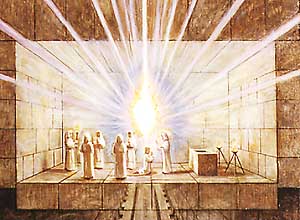 Early at the seventh day and while a distant gong was heard, the
initiated ones were asked by the Hierophant to enter inside a mummy case
[ark] brought by a group of temple guardians and acolytes.
Early at the seventh day and while a distant gong was heard, the
initiated ones were asked by the Hierophant to enter inside a mummy case
[ark] brought by a group of temple guardians and acolytes.
The coffins bore scriptures and symbols resembling the ones used to preserved the bodies of the departed ones. The Hierophant or High Priest of the Temple entranced the initiates, one by one, into a magical hypnotic sleep. When the candidates were laid inside, the lids were closed and they entered into a deep sleep.
The coffins with the candidates inside were tied up to a carrier and with robes lowered down, one at a time, to the Chamber of Rebirth. Entering into the womb again [what did Nicodemous say to Jesus?], "can a man enter into his mothers womb again?" Context and symbols.
All this initiation into the Egyptian educational system of which Moses was schooled, takes place in a chamber in the great Pyramid. The great Pyramid of Gizeh (called Cheops) stands upon a low hill overlooking the yellow sands of the vast Libyan desert. Within it is a narrow passage leading up to the King's Chamber, as it is now called, but which in olden days was the Holy of Holies or Chamber of Initiation.
At the top of this passage is a narrow gate that leads directly into the initiation chamber."...the narrow upward passage leading to the King's Chamber had a "narrow gate" indeed; the same "strait gate" which "leadeth unto life," or the new spiritual rebirth alluded to by Jesus in Matthew vii. 13 et. seq.; and that it is this gate in the Initiation temple, that the writer who recorded the words alleged to have been spoken by an Initiate, was thinking of [Secret Doctrine I, 318, footnote. Blavatsky]
Having passed through the "strait gate that leadeth unto life", the neophyte [initiate to the Mysteries] entered the Holy of Holies. On one side of this chamber there stands a great porphyry sarcophagus. This was the Baptismal Font, upon emerging from which the neophyte was "born again".
At the time of his initiation, the candidate was attached to a couch in the form of a cross and plunged into a deep sleep. He remained in that condition for three days and nights, during which time his spiritual Ego is said to have "ascended into Heaven and descended into Hell," while his entranced body remained within the sarcophagus.
This is the ritual that Moses and Jesus had to go through. The allusion to his water birth and naming is consistent with the initiation process of a neophyte and not floating down the river of the Nile as a babe. The truth is clocked in a play. see passion play and more details of the initiation process on The Initiate
*Remember this when we are told by Paul that the Israelites on their journey of the Exodus were ALL baptized into Moses. Moses was Messiah to the Exodusing Hebrews. The deliverer. The Egyptian name is Iah like Ihuh or YHWH.
"For I would not, brethren, have you ignorant, that our fathers were all under the cloud, and all passed through the sea; and were all baptized into Moses in the cloud and in the sea; and did all eat the same spiritual food; and all drank the same spiritual drink. For they drank of a spiritual rock that followed them, and the rock was Christ [Messu]. "1Cor. 10:1-4. [Messu is the ever-coming son, later translated Messiah by the Hebrews.].
![]()
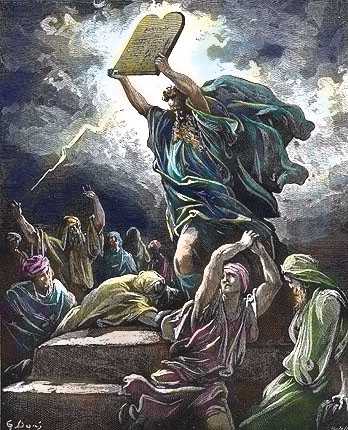 A different point of view: The main contrast between
the Book of Jasher and the bibical account begins when the Lord issues his laws and ordinances
to Moses at Mount Horeb. These are the commonly known directives that accompany the
Ten Commandments, which are left quite unstated in Jasher. Exodus 21:1-36 explans that
the Lord issued instructions to Moses concerning masters and servents, covetousness, neighborly
behavior, crime, marriage, morality, and many other issues, including the all important rule of the Sabbath.
A different point of view: The main contrast between
the Book of Jasher and the bibical account begins when the Lord issues his laws and ordinances
to Moses at Mount Horeb. These are the commonly known directives that accompany the
Ten Commandments, which are left quite unstated in Jasher. Exodus 21:1-36 explans that
the Lord issued instructions to Moses concerning masters and servents, covetousness, neighborly
behavior, crime, marriage, morality, and many other issues, including the all important rule of the Sabbath.
But in Jasher, these laws and ordinances are not conveyed to Moses by God; they are directly
communicated by Jethro, Sheikh of Midian, at the foot of Mount Horeb. As the
senior priest of Sinai, it was he who told Moses he was the El Shaddai: Lord of the Mountain.
Jethro was therefore, the prevailing Great One of the Horeb Temple, the overseer of the
House of Gold. from Lawrence Gardner - Lost Secrets of the Sacred Ark
and ....
The Book Of Jasher
Mount Horeb is the holy mountain of Exodus. It is referred to as “the mountain of God” in Exodus 3:1, and named by Moses “Massah, and Meribah” (Exodus 17:6), where the rock was smited in order to create water for the troups. [This is also near the site of the battle between the Amalek and the Hebrews.] Beginning in Chapter 19 of Exodus, however, there is an apparent move “into the wilderness of Sinai” and “to the desert of Sinai”, whereupon Moses, et al, pitched camp at what is now referred to as Mount Sinai.
When Moses crossed the desert and went up on the mountain, the God he spoke to wasn't Jehovah or Yehwah. There was something on the mountain never before admitted to by theologians because it would blow the lid off of modern Christianity forever. A renowned Archaeological researcher found this site in 1905 on Mount Horeb - dubbed as Gebel Musa, ( Mount of Moses ), or Horeb mountain of Serâbît. In 1905, Flinders Petrie investigated the site, and found the famous proto-Sinaitic script", which is believed to be an early precursor of the alphabet. An ancient temple was found on the mountain. The Temple contained a ton of white powder.
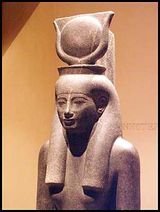 The Temple was dedicated to Hathor who was associated with; Ptah, Ra, Enki, Marduk,
Isis, Thoth, ect.. Restoration work was done by Queen Hatshepsut, along with Tuthmosis
III and Amenhotep III during the New Kingdom.
The Temple was dedicated to Hathor who was associated with; Ptah, Ra, Enki, Marduk,
Isis, Thoth, ect.. Restoration work was done by Queen Hatshepsut, along with Tuthmosis
III and Amenhotep III during the New Kingdom.
Later, after all of the goings on at Mount Sinai, Moses is again told to head for greener pastures (“a land flowing with milk and honey” -- Exodus 33:3), but apparently before going, the children of Israel are stripping “themselves of their ornaments by the mount Horeb.” (Exodus 33:6). Was there some backtracking here? Are there two mountains?
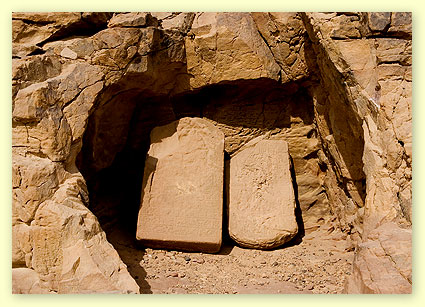 In all respects, it appears that Mount Horeb is the one mountain of the one God. Located
in the Sinai wilderness/desert, Horeb is also a mountain of Sinai. In fact, it was only in the fourth
century A.D. that “Mount Sinai” even existed -- apparently given the name by Greek Christian
monks almost two thousand years after Moses. In modern times, the mountain called Gebel
Musa -- “Mount of Moses” -- is now the alleged stand-in for the holy mountain, but Mount Horeb
is actually the peak now called Mount Serabit, at a location called Serabit el-Khadim.
In all respects, it appears that Mount Horeb is the one mountain of the one God. Located
in the Sinai wilderness/desert, Horeb is also a mountain of Sinai. In fact, it was only in the fourth
century A.D. that “Mount Sinai” even existed -- apparently given the name by Greek Christian
monks almost two thousand years after Moses. In modern times, the mountain called Gebel
Musa -- “Mount of Moses” -- is now the alleged stand-in for the holy mountain, but Mount Horeb
is actually the peak now called Mount Serabit, at a location called Serabit el-Khadim.
Why is this geography lesson important? Because on Mount Serabit (aka Mount Horeb, the biblical Mount Sinai), there exists an extraordinary archaeological discovery: A temple dedicated to the Egyptian goddess, Hathor. One can in fact surmise that Moses was well aware of an operational Egyptian temple in the Sinai, and the Sinai was thus a safe haven for his flock of departing slaves. Thereafter, the temple was lost to the world until 1904 A.D., when a group of archeologists headed by Sir W. M. Flinders Petrie found the site.
According to Laurence Gardner the real find, however, was “the discovery of a metal-lurgist’s crucible and a considerable amount of pure white powder” on Mount Serabit. Also on the premises was a mysterious substance called mfkzt, which is referenced dozens of time on wall and stelae inscriptions. Gardner subsequently gives a convincing argument that the mfkzt -- beside being unpronounceable -- is, in fact, the White Powder of Gold. What Petrie, et al, had found was an Egyptian laboratory of Alchemy standards.
“And mount Sinai was altogether on a smoke... and the smoke thereof ascended as the smoke of a furnace, and the whole mount quaked greatly.” (Exodus 19:18) Mount Horeb -- by any other name -- was the place where it was happening! It was also off limits to anyone not brought up in the Pharaoh’s lineage (e.g. Moses). “And thou shalt set bounds unto the people round about, saying, Take heed to yourselves, that ye go not up into the mount, or touch the border of it; whosoever toucheth the mount shall be surely put to death.” (Exodus 19:12) Whereupon, the narrative continues, suggesting several means by which one might meet an untimely end. see Alexanderia
Further proof of his real mission lies in a link to a web site that describes a temple on the mountain. It was found by Petrie in 1904. Dubbed the mountain of Serâbît, it was dedicated to a 'different God'. The Temple was dedicated to Hathor and only one initiated into "the Mysteries" could assend the mountain. Her name translates to "The House of Horus," and so she is associated with the Egyptian royal family.
The church supressed this information when it was confirmed by other reasearchers.
That explains why the 10 commandments were given to Moses. There is a secret text that explains what Moses was trying to do... he did not succeed. His successor Josuha had the same problem with the Israelites....They worshiped Baal, Elohim, Enlil or a 'different god'.
Recent confirmation about Moses and the real historical secrets of the Exodus were first televised 2 years ago on the History Channel with 'Exodus Decoded', and the National Geographic Channel with the release of newly published Gospel of Judas. We also have a link to the online copy of the Book of Noah which indeed suggests two different Gods. One was kind and benevolent to humans and one was harsh and cruel and judged mankind with vengence.
We identified the House of Gold and the Temple dedicated to Hathor and we also confirmed that Sir W.M. Flinders Petrie found this temple in 1904. This find has been supressed by the church.
We have mentioned that we believe the 10 Commandments came from the Egyptian Book of The Dead and we have shown proof of that at Exerpts from the Book of the Dead. This gives reason to believe these laws were adopted by many nations because of their implementation which may have began in Egypt or possibly India.
We have recorded proof that Thoth wrote down these laws many years before Moses is born, but we also have shown that Enoch may have been the same person as Thoth who may have continued this educational process as was given to him by God. But the KJB portrayed Enoch as a Hebrew ancestor to Moses. He was not Hebrew at all, nor was Abraham in this time period. What we also discovered is that the bible for the most part, forbids the practice of magic but God allows Moses to use it over and over and describes it as 'divine power'.
By the time we read about Solomon, some magic is mentioned and he used it time and time again combined with an extensive understanding of Alchemy and mathmetical genius. These skills all came from the teachings of Moses but extend all the way back to Nimrod and Noah. We therefore conclude that the Bible is only one account of the story of God's people that seems to disreguard the highly educated men who actually knew God. Other records, scrolls, archaeological findings and books like Jasper tell us there is more to this than we realized.
![]()
The KJB says Moses had seen the way the slaves were treated during the war to drive the Hyksos kings out. [ Exodus 7:23] Moses probably went to investigate this and most likely found the people hungry, thirsty, dirty, and overworked, with cruel overseers who whipped them into obedience. That may also explain why Moses killed an overseer and fled into the desert. It is said Moses did not return for fourty years. He would have been 91 years old and Aaron was 93. His age is determined to be 40 in Exodus 7: 7., when he leaves Egypt. We are using the cronology dates on Seqenenre and Ahmose which would make him 40 if he was indeed born in 1590 BC. Because scholars use the date of 1549 BC., when Kamose is killed everything matchs up exactly.
Moses ran for his life [ if he was wanted for murder } but was called by God to return and help remove the people from the enslavement of the New Dynasty, who no longer trusted the Habiru. Since Aaron was Moses' brother and the family was still in Egypt, he had good reason to return and free them. By the time he returned another king, other than Ahmose I, would have been in rule but no firm evidence has emerged to conclude who it was. Biblical scholars say the Hebrews built the city of Ramses, { Memphis } but it was still called Avaris at this time and was controlled by the Hyksos. The Hebrews had enslaved themselves for food and this city would have been accomplished by the king's ( Apophis ) use of them.
![]()
The following information is from the "Encyclopedia Britannica" 1985 ed. vol. 4 pp. 575,6: "The next date is given by a medical papyrus, to which a calendar is added, possibly to insure a correct conversion of dates used in the receipts to the actual timetable. Here it is said that the 9th day of the 11th month of year 9 of King Amenhotep I was the day of the helical rising of Sothis- ie., 1538 BC. This date, however, is only accurate provided the astronomical observations were taken at the old residence of (Avaris) Memphis; if observed at Thebes in Upper Egypt, the residence of the 18th dynasty, the date must be lowered by 20 years- ie., to 1518 BC." or 1514 BC. This is what has been done here. That is why Seqenenre's, Ahmose's amd Kamose's rule dates have been changed from the original writing of this page in 12/1999..
Some put the date of the Exodus at 1456 BC - 1455 BC, which would have been Thutmose III whose reign might have been anywhere from 1479 to 1425BC. Take Moses' age of 91 ( when he returns to Egypt ) away from the year 1549 BC ( The beginning expulsion date of the Hyksos after Seqenenre is murdered and his son Kamose is killed in battle ) and you arrive at 1469 BC or in the rule of Thutmoses III. This all matches up exactly. 1549 - 91 = 1458 BC = ( 2 years; the plagues and preparing to leave in 1456 BC? ) This also brings us back to the 11 year hiatus Amhose II took; (1549-1538) because he was too young to lead the army and it might explain why the Egyptians waited to finish the job. We think Moses lead the army around 1549 BC under Ahmose I, the queen and mother of Amhose II. The 'hiatus' is taken while Ahmose is gaining legal age to rule. The expulsion date now may be different with the new dates of Seqenenre's rule.( from 1558 - 1554 BC )
This range of dates is reached by using the dating of three experts from the chronolgy page, compiled by Gardiner, Penguin and Reeves and Wilkinson 1996, link below at 'Second Intermediate Period'.
see Exodus 1:8-11 which states: "Now there arose a new king over Egypt, who did not know Joseph. And he said to his people, "Look, the people of the children of Israel are more and mightier than we; "come, let us deal shrewdly with them, lest they multiply, and it happen, in the event of war, that they also join our enemies and fight against us, and so go up out of the land."
Therefore, they set taskmasters over them to afflict them with their burdens. And they built for Pharaoh supply cities, Pithom and Raamses."
The bible says that the Israelites built Ramsess, and since Ramesses II, who ruled between 1290 and 1224 B.C., built a royal city named Pi-Ramesse, many just assume him to be the pharaoh of the Exodus.
However recent excavations at this site indicate that this city was occupied much earlier by the Hyksos. It was called Avaris.
The name Raamses itself has also been found inscribed on a burial tomb painting from Pharaoh Amenhotep III; who ruled near ly 100 years before Ramesses II.
Although the bible never specifically identifies the pharaoh of the Exodus by name, it does tell us the exact date of the Exodus.
1 Kings 6:1 states that Solomon began building the Temple in the fourth year of his reign, 480 years after the Exodus. Most bible scholars agree that the fourth year of Solomon's reign was 967 B.C.
So the date of the Exodus can be calculated: 967 + 480 = 1447 B.C. And according to history, Pharaoh Ramesses did not begin his reign until around 1290 BC., so he couldn't have been the Exodus pharaoh. 1447 B.C. is only 11 years off of 1456 B.C. which we found to be the date of the arrival of the Hebrews in Jerusalem. This date is calculated by measurements in the Great Pyramid. Some scholars say this is the date the Exodus began but no one is really sure. Depending upon which history book you read, there are two possible candidates for the Exodus pharoah.
The first is pharaoh Amenhotep II who may have ruled from (1427-1401 B.C.). He was the son of Thutmose III, who ruled from either (1490-1450) or (1479-1425 B.C.), the other possible candidate. Scholars disagree as to the exact dates that these two men ruled which makes it difficult to pin point the exact one.
When Moses fled Egypt at age 39 - 40, the king, Ahmose
II was very young - someone had been preparing Moses for the
throne for the past 22 years. Was Seqenenre preparing Moses?
Now, there was a big problem. If Moses left, who would now
be the future king?
In Thebes, a young man was being groomed to be appointed co-regent for Moses when he became emperor. This young man was immediately elevated to the rank of co-regent and given the same name of Thutmose. The records show that he assumed the throne on his year 22. Now, this is a strange statement and tells much more than one might at first notice. A co-regent, or royal heir-apparent, begins counting his years when he is designated as the "heir-apparent". That becomes his year one. Here, we have a man assuming office in year 22 and he assumes it under that same name as Moses had.
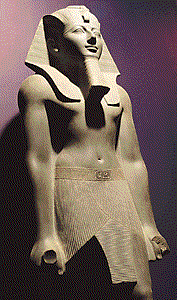 Keep in mind, that as the royal heir assumes each stage
of office, "heir-apparent", crown prince and co-regent,
he also in some places counts his years from that
particular appointment. This is why the years of "Thutmoses
III are given as 54 years, while the years of Amenhotep II are
given as 26 to 32 years (depending on what author you are reading).
The problem with Thutmoses III, who took Moses' place, is that
there are no records of his rise through the ranks. He just suddenly
appears in year 22 as taking the throne.
Keep in mind, that as the royal heir assumes each stage
of office, "heir-apparent", crown prince and co-regent,
he also in some places counts his years from that
particular appointment. This is why the years of "Thutmoses
III are given as 54 years, while the years of Amenhotep II are
given as 26 to 32 years (depending on what author you are reading).
The problem with Thutmoses III, who took Moses' place, is that
there are no records of his rise through the ranks. He just suddenly
appears in year 22 as taking the throne.
Now, what happened here is that when Moses left, in order to continue the reign of the earthly embodiment of "Thoth" in the "Thutmoses" co-regent, this man simply assumed the years that Moses had held that position. In other cases, when a royal personage would die, the god is said to "fly to the heavens" and then redescend into the body of whoever becomes the next earthly embodiment of the god. In this case, there was no death- there had to be an immediate transfer, which is exactly what took place. Everything that had belonged to Moses was simply figuratively transferred to this "new" "Thutmoses" and things went along without missing a step. This man is now referred to by scholars as Thutmoses III. All of the statuary attributed to him are actually the statues that were made of Moses.
We located this in Egypt
“Amosis I had continued his military campaigns in the north and south, but the greater part of his reign had been devoted to the expulsion of the Hyksos and reorganization of the state. The expansion of the empire was carried forward vigorously by his son, Amenophis I [Amenhotep I] (1546-1526 B.C.), and by the son’s successor, Thutmosis I (1526-1508 B.C.), who appeared to come from another line of the royal house.
Through the sixteenth century B.C. the Egyptian armies completed the conquest of Nubia, between the First and Second Cataracts and of the country of Kush, between the Second and Fourth Cataracts. The armies then turned their attentions north, to Syria and Palestine, where a number of small feudal states existed. Strongest was the kingdom of Kadesh, still ruled by the Hyksos. The ethnic fabric of these small states included Semites, Hittites, Mitannis, Hapiru, and Iranians [not today’s Iranians]. After many invasions and battles over a period of half a century, Thutmosis I finally extended the empire into the valleys of the Euphrates, Tigris, and Orontes Rivers ...”
According to Exodus 7:7 "Moses was eighty years old and Aaron eighty-three years old when they spoke to Pharaoh." The ruler of Egypt at this time was Pharaoh Thutmose III (1479 - 1425 B.C.) The fascinating thing about his name is that if you remove THUT from his name you are left with MOSE.
And it was to this Thutmoses III that scholars attribute 54 years of rule. ( 1479 - 1425 BC ) However, 22 of those years belonged to the man he replaced, Moses. And the historic evidence proves this, too. If we subtract the 22 years from the 54 year total, we are left with 32 years. Now, instead of going through all the evidence, let's just read what one historian has to say about this Thutmoses III: "He passed away after a rule of thirty-two (some say fifty-four) years, having made Egyptian leadership in the Mediterranean world complete." This is from "The Story of Civilization" Vol. 1 by Will Durant, (1954) p. 155.
Some believe that if he had had the information that the Thutmoses I and the Amenhotep I of this dynasty were in fact the same person- And it truly was 32 years later when the man who became emperor after taking Moses' place died, maybe it would have made sence. Thutmose I, 1493 BC - Thutmose II, 1479 BC = 22. Thutmose II, 1479 BC - Thutmose III, 1425 BC = 54. XVIII Dynasty Amenhotep II was perhaps the greatest ruler Egypt ever had. By the time of his death, Egypt was truly the world power and the wealthiest nation. Hatshepsut remained alive for many years after Moses fled, and is named as queen on monuments very late into this king's rule.
Second Intermediate Period of Egypt
This link will take you to a chronology of the Kings of Egypt precisely
at the time of the Hyksos rule, which is the fifteenth dynasty of Avaris. Seqenenre's rule was matched
up with Apophis' rule within 2 years, before the change of
Seqenenre's rule was made even though the date of the rule of
Seqenenre falls in the seventeenth dynasty of
Thebes. This puts the datum close enough to be correct, give or take a
year. There are dates for Apophis given as lasting until 1541 BC
- 1540 BC. But we said previously that the Hyksos were driven out in 1550 BC.
Confirmation , Seqenenre and Apophis were having
'words'. This document proves they knew each other..
Tao II(Djehutio)(Sekenenre)
Using a begining date of 1557 BC for the beginning of the
rule of Apophis, seems to fit better. It appears that the
Hyksos King may have hung on until 1549 BC. - and then were
finally driven out by the Army under Ahmose II.
Cross reference here on 'Hyksos'
Huge Encyclopeadia
of the Orient says the date they were driven out to be 1557
BC, but the 'Second Intermediate period' date for Apophis
doesn't end until 1540 BC. This dating doesn't match the
murder of Seqenenre and puts the beginning of the expulsion
under Ahmose II and we know this is incorrect.
Rule of Seqenenre 1558 - 1554 BC has been changed ( 2001 )
by experts but they did not change the dates for Apophis
even though there are missing years of rulers before him.
Seqenenre's date of rule has been changed from 1574 BC to 1558
BC., a difference of 15 years. Should there be a difference
then in Apophis rule too? ( 1540 back to 1554 BC ) driven out by
Moses and Ahmose I ( The Queen ) in 1549 BC after Kamose is
killed.
This is confirmed in Manetho on the Hyksos "By a king, named Alisphragmuthosis (Seqenenre), the shepherds were subdued, and were driven out of the most parts of Egypt and shut up in a place named Avaris, measuring ten thousand acres." Manetho says, "The shepherds had built a wall surrounding this city, which was large and strong, in order to keep all their possessions and plunder in a place of strength.
Tethmosis (Amhose), son of Alisphragmuthosis, attempted to take the city by force and by siege with four hundred and eighty thousand men surrounding it. But he despaired of taking the place by siege, and concluded a treaty with them, that they should leave Egypt, and go, without any harm coming to them, wherever they wished. After the conclusion of the treaty they left with their families and chattels, not fewer than two hundred and forty thousand people, and crossed the desert into Syria. Fearing the Assyrians, who dominated over Asia at that time, they built a city in the country which we now call Judea. It was large enough to contain this great number of men and was called Jerusalem.
We replaced the name of Kamose which they called Alisphragmuthosis, with Seqenenre because we have confirmed beyond any doubt that Seqenenre was Ahmose's and Kamose's father. This also confirms that the Shepherds at Avaris chose Set as their God before Moses came along and at the time of the 'invasion' or Exodus, Ramses was only 5 years old.
We noticed something here: the Name 'Tethmosis' is very close to the name 'Thermuthis' as Josephus mentions above as the name of Moses step-mother. Could we have found the clincher to prove Ahmose 1 (the Queen) was Moses' step-mom? 'Muthosis' is indeed the last part of Seqenenre's name and is also given to his sons. It is only changed slightly to 'mosis'.
And...
This matches Josephus' story that the Hyksos and Moses left on their own to some extent. Of cource Apophis and his band of thugs had to be forced out.
Then we have;
"Later Amenophis returned from Kush with a great army, his son
Ahampses led another army, and both of them joined battle with
the shepherds and the polluted people, and conquered them, and
killed a great many of them, and pursued them to the borders of Syria."
see the bottom of the page for their translation ( Manetho on the Hyksos)
of the names. We have no clue as to who Amenophis is unless it is
Amenhotep but if it is, our theory continues to gain proof.
![]()
The Sciences and Law Moses had been taught were Far beyond his time. ( or were they? )
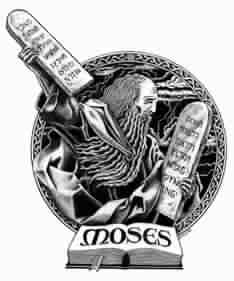
Moses, Son of Light
Sir Isaac Newton studied Moses' esoteric wisdom, also called magico-religious 'science', for nearly 30 years. Newton was able to lay the foundation of physics on his belief that Moses possessed knowledge far beyond that of a mortal man. He believed Moses had knowledge of atoms and matter. He believed Moses understood matter consisted of atoms and those atoms were hard, solid and immutable; gravity accrued to both atoms and to the bodies they composed; gravity was proportional to the quantity of matter in every body. This was backed up by a German physician and al-chemist, Michael Maier, ( 1568 - 1622 ) who argued that the true adepts of science had derived their knowledge from the Egyptian moon-god. Newton had indicated more than once, that he had gained the knowledge of the law of gravitation from decoding sacred literature of past ages. Alchemistry is a science long lost, but was used by Merlin the magician in the time of the legendary King Arthur.
This science involved the displacement and altering of matter. Here is a page on the Science of Alchemy, Hermetic Alchemy Also, Page on Alchemy, and.. Al-Kemi Also here,is a link for NASA which reports that there is work in progress on Anti-gravity. Anti-Gravity
Moses has been described as being 'mighty in words and deeds'. This phrase also was applied to Jesus and Isis. The definition goes on to say , that Moses was 'strong of tongue and capable of uttering 'words of power' which he knew with correct pronunciation, and halted not in his speech'. The reason for this , it is believed is what Plato called, 'star knowledge and necromancy, divining and other aspects of occult lore'. According to legend, Moses was considered a magician and like Isis was skilled in the art of witchcraft. The people around him believed him capable of bending the laws of physics and altering the normal order of things. Isis was "a clever woman...more intelligent than countless gods...She was ignorant of nothing in heaven and earth." - Chester Beatty Papyrus
 "Renowned for her skillful use of witchcraft and magic, Isis
was particularly remembered by the Ancient Egyptians as 'strong
of tongue', that is being in command of words of power 'which
she knew with correct pronunciation, and halted not in her
speech, and was perfect both in giving the command and in saying
the word' [Sir E. A. Wallis budge, Egyptian Magic].
In short she was believed, by means of her voice alone, to be
capable of bending reality and overriding the laws of physics."
"Renowned for her skillful use of witchcraft and magic, Isis
was particularly remembered by the Ancient Egyptians as 'strong
of tongue', that is being in command of words of power 'which
she knew with correct pronunciation, and halted not in her
speech, and was perfect both in giving the command and in saying
the word' [Sir E. A. Wallis budge, Egyptian Magic].
In short she was believed, by means of her voice alone, to be
capable of bending reality and overriding the laws of physics." - Graham Hancock, Fingerprints of the Gods
"Isis was a magician, possibly the archetype for the high priestess
of the Tarot. She learned her magic from Thoth, although
according to some legends she obtained her powers from Ra himself by
tricking him into revealing his name to her, thus acquiring
his full magical knowledge."
- Murray Hope, Practical Egyptian Magic
Immaculate is our Lady Isis...the very terms applied afterwards
to that personage (the Virgin Mary) who succeeded
to her form, titles, symbols, rites, and ceremonies....Thus,
her devotees carried into the new priesthood the former badges
of their profession, the
obligation to celibacy, the tonsure, and the surplice, omitting,
unfortunately, the frequent ablutions prescribed by the ancient
creed."
"The 'Black Virgins' , so highly reverenced in
certain French cathedrals...proved, when at last critically
examined, basalt figures of Isis!'"
- King, The Gnostics and their Remains
In these ancient times, the 'Wisdom' included the advanced highly technical abilities passed to the 'Caretakers' from the Atlantians who were 'Sons of Light'. The Sons of Light, were responsible for the laws of man. In Egyptian legend, there were always wars between 'the Sons of light' and 'the sons of darkness'. Exodus 7:22 revels that Moses was learned in all the wisdom of the Egyptians. This would have included what we would call nowadays, a college education, with much more than a P.H.D. This included all the mathametics, law, astronomy, geometry, science, medicine, and the fine craftsmanship skills of the ancestors in Sumer, plus the advanced magic and skills of a High Priest.
 The Westcar Papyrus
of the fourth dynasty, which is fifteen hundred years
before Moses, tells a story of a man called Tchatcha-em-ankh.
This man was a High Priest or Kher Heb in the
court of King Seneferu. The Pharoah summoned Tchatcha-em-ankh
to speak 'words of power'( kekau ), and the water in a
lake parted and went one side upon the other so the Pharoah
could find a lost article dropped by a maiden. After retrieving
the lost article, the magician again spoke words and the water
returned to its former place. It is said , Moses was an
apprentice to this order of Kher Heb.
The position as the High Priest was with no one above him,
not even the King.
The Westcar Papyrus
of the fourth dynasty, which is fifteen hundred years
before Moses, tells a story of a man called Tchatcha-em-ankh.
This man was a High Priest or Kher Heb in the
court of King Seneferu. The Pharoah summoned Tchatcha-em-ankh
to speak 'words of power'( kekau ), and the water in a
lake parted and went one side upon the other so the Pharoah
could find a lost article dropped by a maiden. After retrieving
the lost article, the magician again spoke words and the water
returned to its former place. It is said , Moses was an
apprentice to this order of Kher Heb.
The position as the High Priest was with no one above him,
not even the King.
The Book of the Dead refers to the priest of Kher Heb and the King, to be the only two people allowed in the room with the newly departed dead, to administer the rights and ritual of passing to the Underworld as the New Osiris. This may be 'The Opening of the Mouth' ceremony. Anubis is also the Ker Heb High Priest. He is normally seen with an Ankh in his hand, which is the symbol of eternal life. The Ankh also represents duality, in that the top or oval being the female element and the cross being the male element. The two combined were then representative of the All. The two parts combine with everyone and every thing. The power of the neutrality was the power of the universe and the expansive and creative particles of an implosive reunion with God. The Ankh was carried in the hand like a KEY. The Key unlocked the door to the spirit world and to truth.
The ritual was also used on special occasions. There is reference to this being 'the secret recital' and 'to advance' in the 'mastery' before Tem. see page 57..Book of the Dead... paragraph, 'The Book of Making Perfect The KHU. The link is below at Apendex.
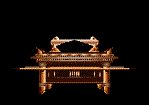 More about the amazing
'treasurers of darkness', Moses possessed at..
The Ark of the Covenant.
Here we try and find out what caused Moses' face to be
burned and what energy source is used to carve the 'tablets' of the Law.
The tablets are carved twice, why?, and we have a mysterious white
powder that Moses made the people drink and a 'Manna' machine.
More about the amazing
'treasurers of darkness', Moses possessed at..
The Ark of the Covenant.
Here we try and find out what caused Moses' face to be
burned and what energy source is used to carve the 'tablets' of the Law.
The tablets are carved twice, why?, and we have a mysterious white
powder that Moses made the people drink and a 'Manna' machine.
Continued on Moses, page 2
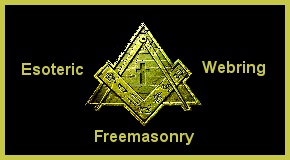
Many of you have entered our site through this 'back door' or the Web ring. Please start at Hiram Discovered or if you want some real answers or put a word in our search engine below.

We are honored with this award for ancient Wisdom .
This award was issued on 6/10/2001 for Moses ,Prince, Master, Mason by Anki Peterson
Our other awards
Awards 2001
Awards 2002
Awards 2003
Awards 2004
Awards 2005
![]()
Search this site
Our search Engine does not search for the links in this site, only words in the text.
NO PART OF THIS SITE MAY BE COPIED OR REPRODUCED, IN WHOLE OR IN PART WITHOUT THE EXPRESS WRITTEN APPROVAL OF THE WEBMASTER...© COPYRIGHT 1999 - 2009 c.i.c.ALL RIGHTS RESERVED
This site has been visited December 10th, 1999.
